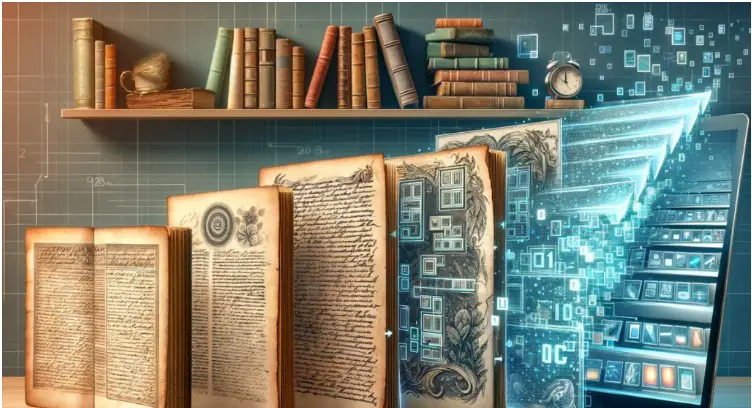Picture a world where your printed words leap off the page and spring to life on screens worldwide. That’s not a snippet from a sci-fi novel; it’s what Optical Character Recognition, or OCR, does every day without breaking a sweat. This tech wizardry takes the squiggles and lines of text from your scanned documents and turns them into digital text that computers can understand and manipulate. It’s like the ultimate party trick for your documents, making them dance to the beat of the digital age.

From Humble Beginnings to Digital Dominance
OCR isn’t a shiny new gadget on the tech scene. It’s been around the block, starting from the days of telegraphy – yeah, the Morse code era – and has matured into the sleek, smart software we now rely on. Back in the ’90s, while we were all getting hyped about the internet, OCR was quietly powering through, digitizing everything from ancient manuscripts to your utility bills.
What’s truly cool is how OCR has evolved. It’s no longer just matching patterns like a toddler with a shape sorter. Nowadays, it’s all grown up, using the brains of artificial intelligence to recognize and learn from its experiences. It’s gotten so good that it can even handle the doctor’s handwriting on your prescription – well, almost.
The Behind-the-Scenes Hero
Let’s get into the nuts and bolts of how OCR does its thing. It starts by scanning the page and picking out lines of text, kind of like how you skim a menu looking for the dessert section. Then, it zooms in on words and individual characters, breaking them down like a grammar expert. By comparing these to a vast library of known patterns – and thanks to machine learning, this library is getting bigger and smarter by the day – OCR software can translate images into text that your computer can edit, search, and, let’s be honest, judge for spelling errors.
This tech has become the silent powerhouse in places you wouldn’t expect. It’s behind data entry automation, making sure businesses don’t drown in paperwork. It turns printed books into audiobooks, giving access to those who can’t see. And in the world of finance and security, OCR is the unsung hero verifying checks and passports.
For the average Joe and Jane, OCR is right there in the toolbox too, with tools like the image to text converter – a nifty online service that takes your scanned images and whips them into editable text files. Whether you’re saving grandma’s recipes or digitizing a stack of old-school reports, OCR has got your back.
OCR’s Growing Pains and Brain Gains
OCR isn’t perfect – it’s had its fair share of growing pains. The struggle is real when it comes to recognizing that one friend’s handwriting that looks like spaghetti thrown on paper. And homographs – words that look the same but have different meanings – are like that one riddle that even OCR sometimes can’t crack.
But here’s the kicker: OCR is getting smarter. With AI and machine learning, it’s learning context, getting sharper at figuring out tricky text, and inching closer to reading like a human. It’s not just about seeing the words – it’s about understanding them.
More Than Just a Cool Tool
But OCR isn’t just tech wizardry; it’s got a heart, too. It’s saving trees by cutting down on paper use and making information accessible to everyone, including people with disabilities. It’s not just about turning the pages into pixels; it’s about opening up those pages to the whole world.
The Crystal Ball of OCR
Looking ahead, OCR is set to become even more of a big deal. It’ll be there, making sense of the zettabytes of data we’re churning out, and finding new ways to make our digital lives easier and more connected. It’s not just a phase – it’s the future.
In the end, OCR is kind of like the bass player in a band – not always in the spotlight, but without it, the whole song falls apart. It’s a testament to how far we’ve come in blending the physical and digital worlds. So next time you scan a document, and it magically turns into text on your screen, give a little nod to OCR – the tech that’s quietly changing the world, one character at a time.
I am passionate about my work. Because I love what I do, I have a steady source of motivation that drives me to do my best.
I’m not comfortable with settling, and I’m always looking for an opportunity to do better and achieve greatness. I have a keen interest in the technical field. Apart from this, I am a social media influencer.



